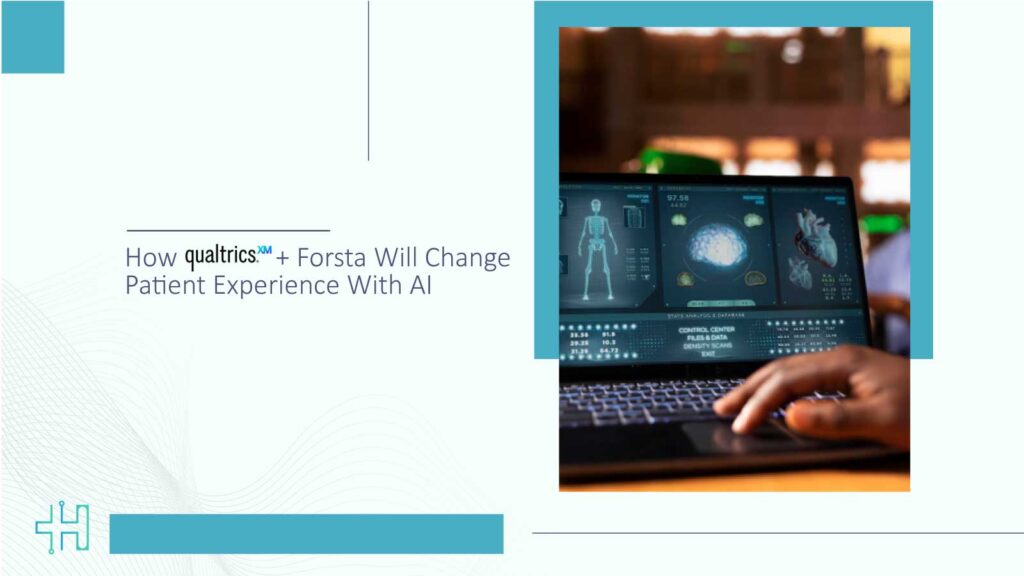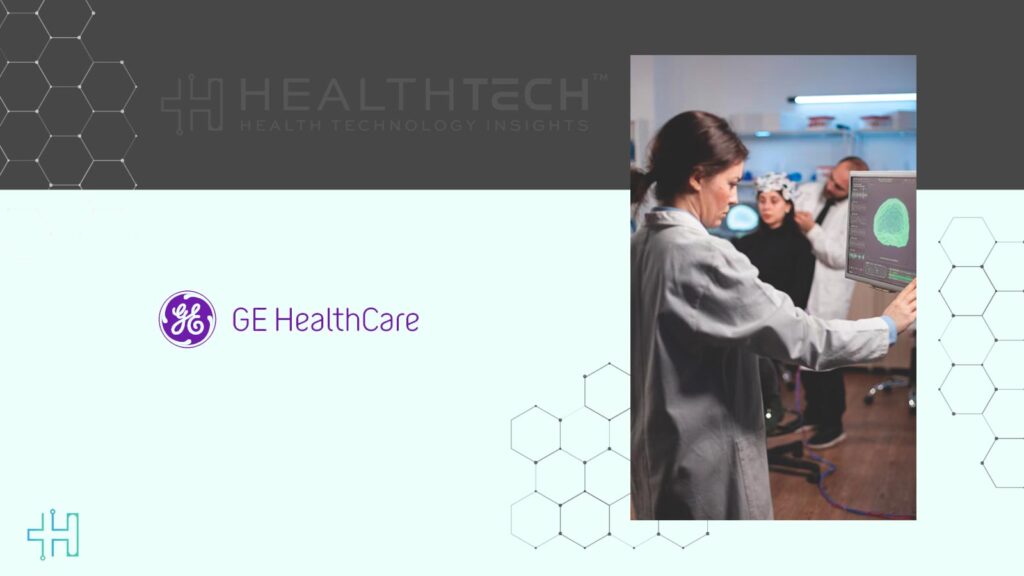In October 2025, Qualtrics announced it bought Forsta from Press Ganey – a move that not only looks like financial planning but also signals to the market that healthcare orgs are obtaining real changes in their ways of dealing with patient experience.
Combining Qualtrics’ AI-powered experience management platform and Forsta’s knowledge of patient feedback and healthcare insights, the collaboration is striving to create one of the most AI-driven experience platforms in the healthcare sector that is practically perfect. Such a connection can reroute the healthcare facilities and systems’ approach in collecting, visualizing, and implementing patient feedback.
The partnership thus fulfills the unique opportunity – transition from reactive measurement to proactive experience management. Instead of just documenting the situation after a patient’s visit, the integrated platform can process the data itself, anticipate concerns, and even identify the way for the staff to accomplish the performance of interventions that lead to both patient outcomes and satisfaction to improve. For healthcare providers, this is a paradigm shift where AI is no longer a mere tool for decision-making support but, instead, a major player in elevating the level and personalization of care.
From Feedback Collection to Intelligent Experience Management
In the past, patient experience measurement tools primarily revolved around the gathering of surveys and satisfaction data. Despite being valuable, they often reflect experiences that are already finished, i.e., they show what has happened rather than what is going to happen.
Qualtrics and Forsta are two entities that are not only teaming up but also looking to turn that old story on its head. The idea is to change the association between customer feedback and customer insight from passive to active and predictive by combining Qualtrics’ AI-powered experience management (XM) system with Forsta’s deep healthcare domain knowledge and feedback intelligence.
This, in a way, is coining a scenario where healthcare professionals can spot patient worries that are on the rise before they become a problem – it is quite easy to visualize a case where the staff is able to intervene with a process that is causing a clinic to become congested thus leading to patient dissatisfaction or simply a patient who is not following his/her post-discharge instructions due to lack of understanding or emotional distress. The medical staff would no longer wait for survey outcomes, but the AI will be there to seize the occurrence of such themes as they happen.
AI That Understands Healthcare Context
AI tools fail in healthcare systems to grasp subtle aspects of the relationships in the healthcare field. The terms ‘pain,’ ‘wait,’ or ‘support’ might mean completely different things depending on the situation.
Qualtrics wants to make their AI more contextually aware by mixing through their AI training – Forsta’s patient feedback and benchmark data spanning several decades. The end goal is a platform that can understand a patient’s emotions with a medical background.
Say, several patients at a particular clinic find that the same wait time is too long – the system, then, can differentiate between operational delays, procedural bottlenecks, or perception issues caused by poor communication. Such a depth of contextual understanding can empower hospital administrators to not only be quicker in their response but also more efficient in their actions.
Bridging the Gap Between Patients and Providers
Patient experience is not only about the level of satisfaction; it remains to be the trust, empathy, and communication. Thus, any bad event in the patient experience can make a patient less willing to go back to the facility, adhere to treatment plans, or be willing to recommend the place to others.
These changes mean that healthcare mergers can provide organizations with the necessary resources to close this gap through the use of real-time feedback loops. The integrated platform might enable:
- Clinicians get AI-curated insights during care delivery.
- Administrators uncover the early warning signs of patient frustration or confusion.
- Experience teams utilize technology to automate the follow-up process when the sentiment score is below a certain level.
Such a transition from a fixed assessment to an interactive engagement model could revolutionize the ways healthcare systems foster patient relationships that is, turning surveys into solutions.
Unifying Employee and Patient Experience
One more aspect, which is related to the connection between Employee Experience (EX) and Patient Experience (PX), is that burnout, lack of staff, and poor communication are among the factors that patients feel care changes as a result.
Experience management by Qualtrics is already on the way to measuring employee engagement, while Forsta is a patient-focused company with expertise in the healthcare sector. They can conjointly connect the two data streams to locate the links between workforce morale and patient outcomes.
Suppose staff satisfaction scores are low in some departments, and patient complaints are increasing; the AI can identify the trend and suggest intervention activities like getting schedules better, training, or process redesign. Such an integrated model elevates “experience intelligence” as the underpinning of clinical as well as organizational success.
From Data to Action: The Real Promise of AI Experience Platforms
Healthcare systems are the cause of the generation of unstructured data in huge volumes – patient comments, call transcripts, reviews, clinical notes – most of which are left unused. The Qualtrics – Forsta merger is designed to convert that data into intelligence that can be acted upon.
Below is an example of that:
- AI-driven dashboards that capture the gist of patients’ comments, the main reasons, and possible actions for the future.
- Feedback is automatically routed to the teams that are the most suitable recipients – nurses, IT, facilities, or administration – thus, no signal is lost.
- Predictive analytics to highlight the themes that keep recurring, which can be indicative of systemic issues.
- Conversational AI that makes it possible for patients to give their feedback naturally through chat or voice, without having to complete a lengthy form.
In fact, the progression has empowered healthcare systems to shift from the mode of data collection to experience orchestration – where customer feedback has a direct impact on care quality, speed, and empathy.
Ethical AI and Patient Trust
Trust plays a major role in medicine as well as in the field of AI. Patients are less hesitant to use digital systems if they are aware that their data is handled in a secure manner. Qualtrics and Forsta will likely lead the way by implementing various measures to ensure the ethical design of AI, such as openness, data privacy, and explainability. It also means that any AI recommendation will not be a “black box” suggestion but a well-founded insight with traceable data points.
Health care organizations will be able to use these guidelines to avoid merely legal compliance but also to make sure that the patients and health care providers trust that technology is a facilitator of human skills and not a rival of human prowess.
A Glimpse Into the Future
The transformation of AI into one capable of managing patient experience on the ground without waiting for complaints has made patient experience management grow from a reactive task to a proactive discipline. The Qualtrics-Forsta collaboration is a technology-driven era that not just records but also realizes the experiences.
The hospitals and health systems that are moving towards such platforms will be reaping benefits like:
- Shorter feedback loops between patients and providers
- More personalized care journeys
- Faster resolution of service bottlenecks
- Greater alignment between clinical outcomes and patient perceptions
It’s no longer a matter of gathering opinions; rather, it’s about building a healthcare system that responds, learns, and changes in an ongoing manner.
Final Thoughts
Patient experience has been a major factor in the healthcare industry for a long time, and the correlation has been established between patient experience and patient outcomes. However, the challenge has always been the effective measurement of the experience.
The healthcare sector is now leveraging Qualtrics’ AI capabilities and Forsta’s healthcare intelligence to gain real-time access to patient experience interactions; thus, they are gradually reaching the stage of experience ecosystems that can figure out, react, and evolve as per the patients’ needs. The integration represents a time when feedback running the gamut from a comment at the bedside to a digital review would be incorporated into a more intelligent and compassionate healthcare system.
FAQs
1. What is the Qualtrics–Forsta acquisition about?
Qualtrics acquired Forsta from Press Ganey to integrate its AI-driven experience management platform with Forsta’s expertise in patient feedback. The goal is to create a more intelligent, real-time healthcare experience platform.
2. How will this merger improve patient experience?
By combining AI capabilities with deep healthcare domain knowledge, the platform can analyze feedback in real time, predict issues, and guide actionable interventions to enhance care, satisfaction, and communication.
3. Will the platform only be used in hospitals?
While the initial focus is on healthcare providers, the platform’s AI-driven experience management tools can also be applied to other sectors that rely on feedback, including employee experience (EX) and customer experience (CX).
4. How does AI enhance patient experience management?
AI can process large volumes of feedback, identify patterns, and provide predictive insights. This allows healthcare teams to act proactively, address concerns before they escalate, and tailor care more effectively to individual patients.
5. Is patient data safe with AI integration?
Data privacy and ethical AI are central to the platform. Patient information is handled with robust security measures and regulatory compliance to ensure confidentiality and trust.
Keep reading on Health Technology Insights.
To participate in our interviews, please write to our HealthTech Media Room at sudipto@intentamplify.com








